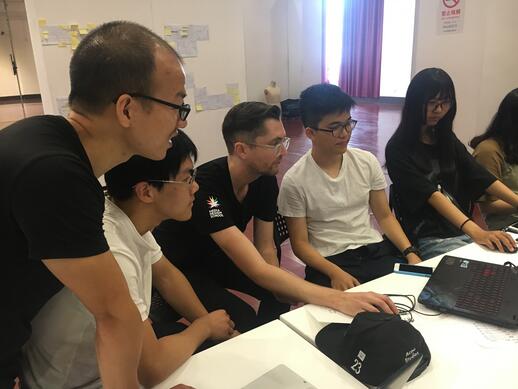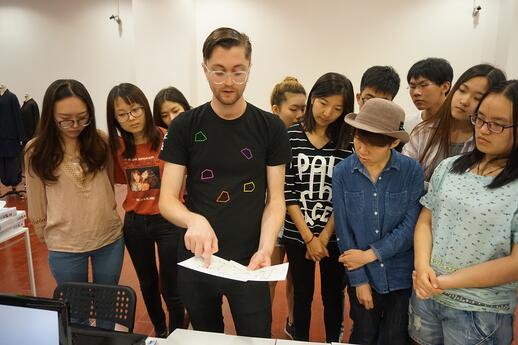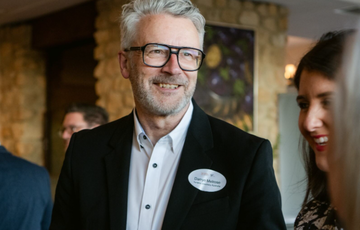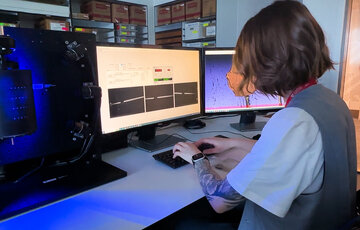Education is Art - MDS runs Game Development workshop in Shanghai
Bachelor of Creative Technologies (Game Art) lecturer Pat Dunal recently spent some time facilitating a game design workshop at the Eastern Chinese Normal University (ECNU) in Shanghai, China. Here, Pat tells us about his teaching experience firsthand...
I had the amazing privilege of traveling to Shanghai, China, to attend and participate in a multi-disciplinary event hosted by the East China Normal University. The event started with an idea of Prof Wei, the Dean of ECNU to organize an international event.
The three week-long event, entitled “Education is Art”, brought together a number of schools from the Laureate network of Universities to showcase different approaches to education in its relationship with art. Prof Wei also introduced another key theme: the interpretation of traditional Miao minority, settled in several villages in China, Thailand, Vietnam and Indonesia.
Taking place in the historic general post office building in Shanghai, the event consisted of three main components:
1) The opening ceremony began with a fashion show displaying the work of Students from East China Normal University (Shanghai) and the Nuova Accademia di Belle Arti (Milan).
2) The following three weeks were filled with workshops delivered by various Laureate schools from around the world.
3) The space that the ceremony and workshops took place in showcased the art, design and fashion work of the ECNU students, and was accessible to the public for the duration of the event.
I delivered a six-day workshop introducing video game development to a group of 20 students in ECNU’s School of Design. The students were all focussing on different areas ranging from animation to architecture.
Day 1: A brief history of video games/introduction to the video game industry. Elements of a game (feat. The 2D platformer)
We analysed the classic 2D platformer genre, referencing Super Mario Bros. 3 and Super Mario world. Students split into 4 teams, and designed their own levels on quad paper. At the end of the class, we assembled all levels together and reflected on the various ideas presented
Day 2: Character design
Going back to the roots of stat based character design, I created a simplified table top Role-Playing-Game (Dungeons and Dragons) character sheet and had the students each create their own fictional game character. With a limited number of points to allocate to character skills, students learned about game balancing. Upon successful development of the characters, students created silhouettes and sketches of what their character looked like visually. The final hour of the workshop was spent introducing them to a lightweight 3D modelling software “MagicaVoxel.” The end result was a 3D modelled character based on their design choices.
Day 3: 3D Sculpting (face modelling)
3D sculpting is an important part of next-generation game asset creation. I introduced the students to the free, lightweight and powerful software “Sculptris.” We spent the first half of the workshop exploring the various tools while modelling a human face. The second half was spent turning this face into a fantastical creature.
Day 4: Worldbuilding part
Introduction to the concept of Worldbuilding: creating a fictional world. Examined several notable examples of memorable fictional game worlds. Using the “Outside-In” method of worldbuilding (The same method used by J.R.R. Tolkien) students divided into 4 teams. Each team created a unique are of a world map with its own history, flora, fauna and story. At the end of the class, we assembled all the sections to create a massive world map. The unique ideas presented by each team created a rich and vibrant Open World that could inspire countless video game adventures.
Day 5: Worldbuilding part 2
Taking what we had done in the previous workshop class, we returned to 3D modelling with “MagicaVoxel.” Students took their worldmap section they had created previously and attempted to recreate it in 3D. Using the next-generation 3D video game engine Unreal 4, we assembled all the map sections and create a 3D interactive open world. By the end of the class, all students had a chance to run around and explore the world they had all created.
Day 6: Collaboration with NABA (Nuova Accademia di Belle Arti)
During the workshop, I had a chance to speak with several students from the fashion program at NABA. We discussed a collaboration project using unconventional materials to promote an out-of-the-box approach to world/level/game design. Using the overall theme of Miao culture, we designed and created a scale model Miao village. Using scale model houses, props and environment assets, we replicated the paper-prototype phase of game development and created a 3-dimensional artefact that remained for the duration of the event. The event was an amazing opportunity for me. The students were incredibly motivated, hard-working and creative. By the end of the six days, many of them were regretting their choice of major and wish that they had chosen to study game development at Media Design School. Fortunately, I had numerous copies of our international student prospectus in Chinese!





